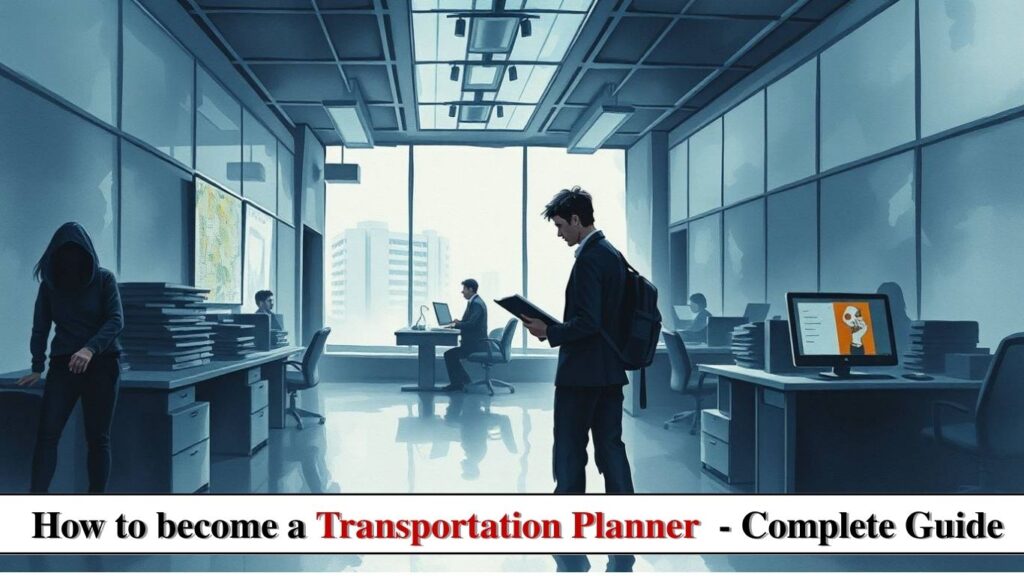
Introduction
In our rapidly urbanizing world, efficient transportation systems are the lifeblood of economic growth and quality of life. Transportation Planners serve as the architects of mobility, designing systems that move people and goods safely, efficiently, and sustainably.
This comprehensive guide covers everything you need to know about this critical profession:
- The Evolution of Transportation Planning
- Key Roles & Specializations
- 2024 Salary Benchmarks Worldwide
- Essential Qualifications & Certifications
- Step-by-Step Career Path
- Future Trends Shaping the Industry
History of Transportation Planning
Transportation planning has evolved alongside human civilization’s growing mobility needs.
Key Historical Milestones:
- Roman Empire: Built first organized road networks
- 19th Century: Railway boom transforms continental transportation
- 1920s: First comprehensive urban transportation plans emerge
- 1956: US Interstate Highway Act creates national highway system
- 1960s: Birth of modern traffic modeling and simulation
- 1990s: Sustainable transportation concepts gain traction
- 2000s: Integration of GIS and smart technologies
- 2010s-Present: Focus on multimodal systems, EVs, and smart cities
Today’s planners balance traditional infrastructure needs with disruptive technologies like autonomous vehicles and mobility-as-a-service.
Roles & Responsibilities of a Transportation Planner
Transportation planners work across various sectors to optimize mobility systems.
Primary Specializations:
- Urban Transportation Planning
- Design public transit networks
- Develop pedestrian and cycling infrastructure
- Analyze traffic flow patterns
- Freight and Logistics Planning
- Optimize goods movement systems
- Plan intermodal facilities
- Address last-mile delivery challenges
- Environmental Transportation Planning
- Assess project environmental impacts
- Develop sustainable mobility solutions
- Implement climate action plans
- Transportation Modelers
- Create computer simulations
- Forecast travel demand
- Analyze big data sets
Key Responsibilities:
✔ Conduct community engagement
✔ Prepare transportation master plans
✔ Evaluate project alternatives
✔ Manage grant applications
✔ Monitor system performance
Transportation Planner Salary (2024)
Salaries vary by experience, sector, and location.
Global Salary Benchmarks:
| Country | Entry-Level | Mid-Career | Senior-Level |
|---|---|---|---|
| USA | $55,000 | $80,000 | $110,000+ |
| UK | £30,000 | £45,000 | £65,000+ |
| Canada | CAD 60,000 | CAD 85,000 | CAD 110,000+ |
| India | ₹5 LPA | ₹10 LPA | ₹18 LPA+ |
Top Paying Sectors:
- Federal/State Transportation Agencies
- Major Consulting Firms
- Tech Companies (Mobility Startups)
- International Development Organizations
Qualifications & Skills Required
Educational Path:
- Bachelor’s Degree in:
- Urban Planning
- Civil Engineering
- Geography/GIS
- Transportation Engineering
- Master’s Degree (Preferred):
- MURP (Master of Urban and Regional Planning)
- MSc in Transportation
Essential Certifications:
✔ AICP (American Institute of Certified Planners)
✔ PTOE (Professional Traffic Operations Engineer)
✔ GIS Professional Certification
✔ PMP for Project Managers
Technical Skills:
- GIS Software (ArcGIS, QGIS)
- Transportation Modeling (VISUM, TransCAD)
- Data Analysis (Python, R)
- CAD/BIM Tools
- Public Engagement Platforms
Soft Skills:
✔ Systems Thinking
✔ Stakeholder Management
✔ Creative Problem-Solving
✔ Technical Writing
✔ Political Savvy
How to Become a Transportation Planner (Step-by-Step)
Step 1: Build Educational Foundation
- Pursue relevant undergraduate degree
- Take transportation-focused electives
Step 2: Gain Practical Experience
- Complete internships with MPOs or consulting firms
- Volunteer for local planning initiatives
Step 3: Develop Technical Expertise
- Master GIS and modeling software
- Learn data visualization techniques
Step 4: Earn Certifications
- Obtain AICP after gaining experience
- Consider specialized credentials
Step 5: Build Professional Network
- Join APA, ITE, or local planning associations
- Attend industry conferences
Step 6: Advance Your Career
- Specialize in emerging areas
- Move into management roles
Future Scope of Transportation Planning
The global smart transportation market is projected to reach $285 billion by 2028 (MarketsandMarkets).
Emerging Trends:
🚗 Autonomous Vehicle Integration
🚌 Mobility-as-a-Service (MaaS) Platforms
🌿 Climate-Resilient Infrastructure
📱 Digital Twin Technology
🚲 Micromobility Solutions
Job Growth Outlook:
- 11% growth expected (2022-2032)
- High demand for data-savvy planners
- Expanding opportunities in developing nations
Conclusion
Transportation planning offers dynamic career opportunities at the intersection of technology, policy, and infrastructure.
Key Takeaways:
✅ Combine technical skills with policy understanding
✅ Specialize in high-growth areas like smart mobility
✅ Obtain professional certifications
✅ Stay current with technological disruptions
The future of transportation is being designed today – will you help shape it?
By following this detailed roadmap, you’ll be equipped to navigate a rewarding career in this essential field! 🚦🌉













Post Comment